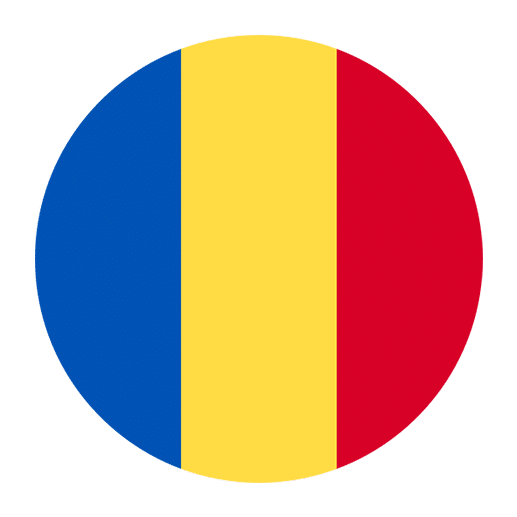Learning a new language is a journey filled with excitement, challenges, and rewarding experiences. For those interested in Romanian, the language of Romania and Moldova, the journey is no different. Romanian, a Romance language with Latin roots, boasts a unique blend of Slavic, Turkish, Greek, Hungarian, and other influences. It is a language rich in history and culture, and learning it can open doors to understanding a fascinating part of Europe.
In today’s digital age, there are numerous online resources available to aid in learning Romanian. From comprehensive courses to interactive apps, and from language exchange platforms to grammar guides, the options are abundant. This article will explore the top Romanian language learning sites, providing an overview of what each offers to help you make an informed decision on where to begin your Romanian language learning journey.
1. Duolingo
Overview: Duolingo is one of the most popular language learning platforms available today, known for its engaging and gamified approach to language acquisition.
Features:
– **Interactive Lessons:** Duolingo offers bite-sized, interactive lessons that cover a range of topics from basic vocabulary to advanced grammar.
– **Gamification:** The app uses a game-like interface to make learning fun, with points, levels, and rewards to keep users motivated.
– **Daily Goals:** Users can set daily goals to ensure consistent practice.
– **Community Support:** Duolingo has a large community of learners who can offer support and encouragement.
Pros:
– Free to use, with optional premium features.
– Engaging and user-friendly interface.
– Suitable for beginners.
Cons:
– Limited depth for advanced learners.
– Grammar explanations can be sparse.
2. Babbel
Overview: Babbel is a subscription-based language learning platform that focuses on practical conversation skills.
Features:
– **Structured Courses:** Babbel offers structured courses designed by language experts, covering various aspects of the language.
– **Dialogue-based Learning:** The lessons are centered around real-life conversations, helping learners to develop speaking and listening skills.
– **Speech Recognition:** Babbel includes speech recognition technology to help improve pronunciation.
– **Grammar and Vocabulary:** The platform provides in-depth grammar explanations and vocabulary building exercises.
Pros:
– High-quality, well-structured courses.
– Focus on practical language use.
– Effective speech recognition feature.
Cons:
– Requires a subscription.
– Limited to a more traditional teaching approach.
3. Mondly
Overview: Mondly is an innovative language learning app that uses cutting-edge technology to enhance the learning experience.
Features:
– **Augmented Reality (AR):** Mondly incorporates AR to create immersive language learning experiences.
– **Chatbot Conversations:** The app includes chatbot conversations to simulate real-life interactions.
– **Daily Lessons:** Short, daily lessons help users to practice consistently.
– **Phrasebook:** Mondly provides a phrasebook with useful phrases for travel and daily use.
Pros:
– Innovative use of technology.
– Engaging and interactive lessons.
– Suitable for visual and auditory learners.
Cons:
– Some features require a premium subscription.
– May not offer as much depth in grammar explanations.
4. RomanianPod101
Overview: RomanianPod101 is a comprehensive resource for learning Romanian, offering a wide range of audio and video lessons.
Features:
– **Audio and Video Lessons:** The platform offers a vast library of audio and video lessons, covering various topics and proficiency levels.
– **Cultural Insights:** RomanianPod101 includes cultural insights to help learners understand the context of the language.
– **Interactive Learning Tools:** The site offers interactive tools such as flashcards, quizzes, and vocabulary lists.
– **Personalized Learning Paths:** Users can create personalized learning paths based on their goals and proficiency level.
Pros:
– Extensive library of lessons and resources.
– Focus on cultural context.
– Flexible learning paths.
Cons:
– Requires a subscription for full access.
– The abundance of content can be overwhelming for beginners.
5. Memrise
Overview: Memrise is a popular language learning app that uses spaced repetition and community-created content to enhance learning.
Features:
– **Spaced Repetition:** Memrise uses spaced repetition to help users retain vocabulary and grammar.
– **Community-created Courses:** The platform offers a variety of courses created by the community, covering different aspects of the language.
– **Multimedia Content:** Memrise includes videos, audio, and images to create a rich learning experience.
– **Gamification:** The app incorporates gamification elements to keep learners engaged.
Pros:
– Free and premium options available.
– Effective use of spaced repetition.
– Diverse range of courses.
Cons:
– Quality of community-created courses can vary.
– Limited focus on speaking and listening skills.
6. Clozemaster
Overview: Clozemaster is a unique language learning platform that focuses on learning vocabulary in context through fill-in-the-blank exercises.
Features:
– **Contextual Learning:** Clozemaster provides sentences with missing words, helping learners to understand vocabulary in context.
– **Wide Range of Sentences:** The platform offers a vast collection of sentences, covering various topics and difficulty levels.
– **Gamification:** Points and levels keep users motivated and engaged.
– **Customizable Learning:** Users can customize their learning experience by choosing specific topics and difficulty levels.
Pros:
– Free to use, with optional premium features.
– Effective for vocabulary building.
– Engaging and interactive.
Cons:
– Limited focus on grammar and speaking skills.
– Not suitable for complete beginners.
7. Pimsleur
Overview: Pimsleur is a well-known language learning program that focuses on auditory learning and speaking skills.
Features:
– **Audio-based Lessons:** Pimsleur offers audio-based lessons that emphasize listening and speaking skills.
– **Graduated Interval Recall:** The program uses graduated interval recall to help learners retain information.
– **Practical Conversations:** Lessons are designed around practical conversations, making it easier to apply what you’ve learned.
– **Mobile App:** The Pimsleur app allows learners to study on the go.
Pros:
– Effective for developing speaking and listening skills.
– Convenient for learning on the go.
– Emphasis on practical language use.
Cons:
– Requires a subscription.
– Limited focus on reading and writing skills.
8. italki
Overview: italki is a language learning platform that connects learners with native-speaking tutors for personalized lessons.
Features:
– **One-on-One Lessons:** italki offers personalized, one-on-one lessons with native-speaking tutors.
– **Flexible Scheduling:** Learners can schedule lessons at their convenience.
– **Community Features:** The platform includes community features such as language exchange and discussion forums.
– **Wide Range of Tutors:** italki has a wide range of tutors, allowing learners to choose one that fits their learning style and goals.
Pros:
– Personalized learning experience.
– Flexible scheduling.
– Access to native speakers.
Cons:
– Lessons can be expensive.
– Quality of tutors can vary.
9. LingQ
Overview: LingQ is a language learning platform that focuses on learning through reading and listening to authentic content.
Features:
– **Authentic Content:** LingQ offers a wide range of authentic content, including articles, podcasts, and videos.
– **Interactive Reader:** The platform includes an interactive reader that allows users to look up and save new words and phrases.
– **Vocabulary Building:** LingQ uses spaced repetition to help learners retain new vocabulary.
– **Community Features:** The platform includes community features such as language exchange and discussion forums.
Pros:
– Emphasis on authentic content.
– Effective vocabulary building tools.
– Community support.
Cons:
– Some features require a premium subscription.
– Limited focus on speaking skills.
10. Learn Romanian with Nico
Overview: Learn Romanian with Nico is a YouTube channel that offers free Romanian language lessons.
Features:
– **Video Lessons:** The channel offers a variety of video lessons covering vocabulary, grammar, and pronunciation.
– **Cultural Insights:** Nico includes cultural insights to help learners understand the context of the language.
– **Interactive Exercises:** Some videos include interactive exercises to reinforce learning.
– **Free Resources:** All content on the channel is free to access.
Pros:
– Free to use.
– Engaging video lessons.
– Focus on cultural context.
Cons:
– Limited to video format.
– No personalized learning path.
Conclusion
Learning Romanian can be a rewarding and enriching experience, and with the plethora of online resources available, it has never been easier to get started. Whether you prefer structured courses, interactive apps, or personalized lessons with native speakers, there is a platform out there to suit your needs. By exploring the top Romanian language learning sites mentioned in this article, you can find the right tools to help you on your journey to mastering Romanian. Remember, consistency and practice are key, so make use of these resources regularly and immerse yourself in the language as much as possible. Happy learning!

